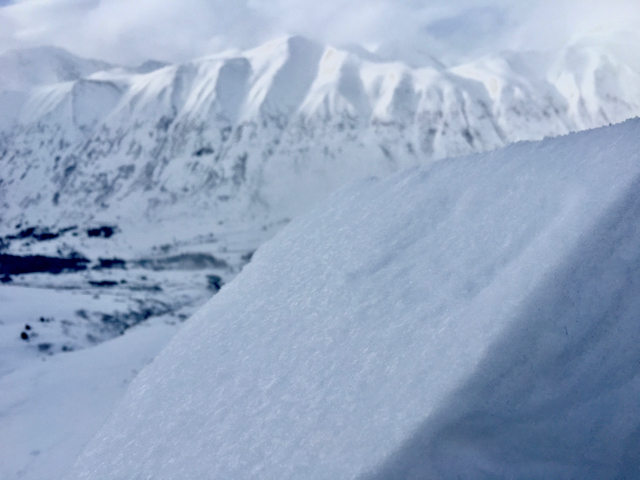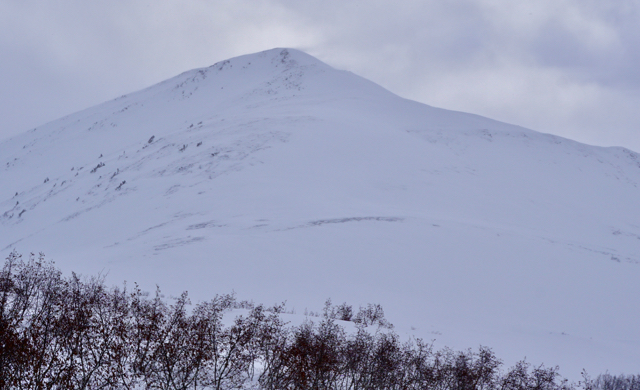Turnagain Pass
|
|
The avalanche danger is CONSIDERABLE on all slopes steeper than 35 degrees above 1,000′ in elevation. Slab avalanches anywhere between 1′ and 3+’ thick are likely to be triggered in the steeper terrain. These could be shallow fresh wind slabs or thicker, and more dangerous, slabs that break in buried weak layers. These larger slabs have the potential to be triggered remotely from the ridge, the side or from below. Cornice falls are also possible today and could trigger a large slab below.
The danger is MODERATE danger below 1,000′ where an avalanche triggered above could wash debris into this lower zone.
*Today is a day to keep our terrain choices conservative and stick to mellow slopes away from runout zones from avalanche paths.
Recent heavy precipitation, strong winds and warm temperatures have created dangerous conditions in the Southern Kenai; this includes the Seward zone (Lost Lake/Carter/etc). Travel is not recommended in avalanche terrain. Other regions throughout Southcentral, AK including Chugach State Park and Hatcher Pass have heightened avalanche conditions.
If you haven’t seen it yet, click HERE for a near miss report following a large avalanche triggered by a snowmachiner in Lynx Creek in early February. Luckily no one was caught in this avalanche. We want to extend a big thank you to all those involved and willing to share their story. These types of avalanche conditions continue to plague the region.



